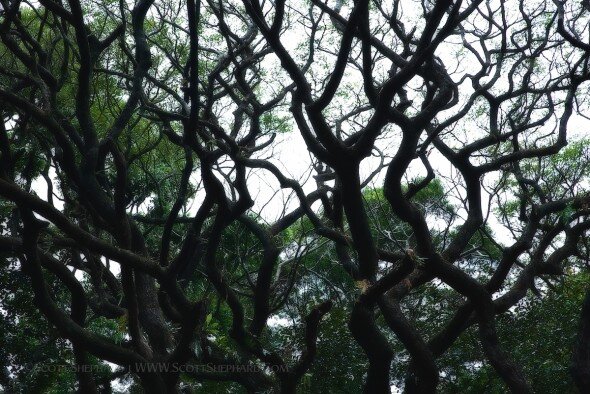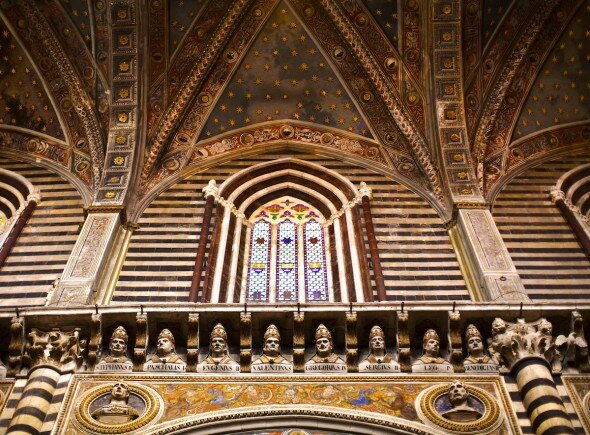Portrait of Kendra
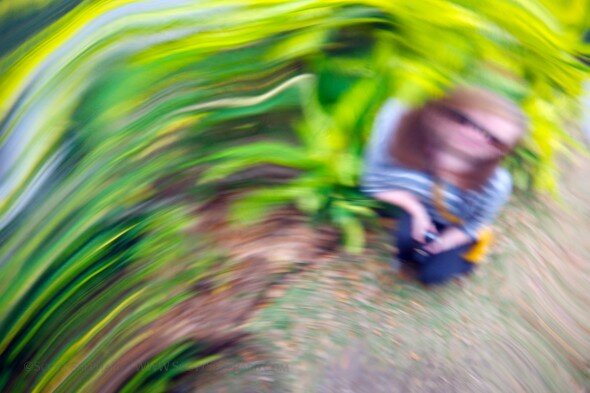 This isn't a Photoshop manipulation and I'm guessing there's only a small chance you are under the influence of psychotropic drugs or absinthe. Kendra is a real person and this scene is exactly what the camera saw.The unreality is due to the fact that I am photographing Kendra's distorted reflection in a chrome sculpture in the sculpture garden next the the New Orleans Museum of Art. Needless to say, Kendra doesn't look like this.See yesterday's post for a different look at the same sculpture.
This isn't a Photoshop manipulation and I'm guessing there's only a small chance you are under the influence of psychotropic drugs or absinthe. Kendra is a real person and this scene is exactly what the camera saw.The unreality is due to the fact that I am photographing Kendra's distorted reflection in a chrome sculpture in the sculpture garden next the the New Orleans Museum of Art. Needless to say, Kendra doesn't look like this.See yesterday's post for a different look at the same sculpture.
Altered States
Tangle
Frosty Colony
 I talk from time to time about chaos and patterns in nature. When you move the camera lens in close to something, it's hard not to see things that you would otherwise miss.As I was preparing this photo I was wondering about the "why" and "where" of the formation of frost crystals. And why not wonder "why?", too?
I talk from time to time about chaos and patterns in nature. When you move the camera lens in close to something, it's hard not to see things that you would otherwise miss.As I was preparing this photo I was wondering about the "why" and "where" of the formation of frost crystals. And why not wonder "why?", too?
A Stony Gaze
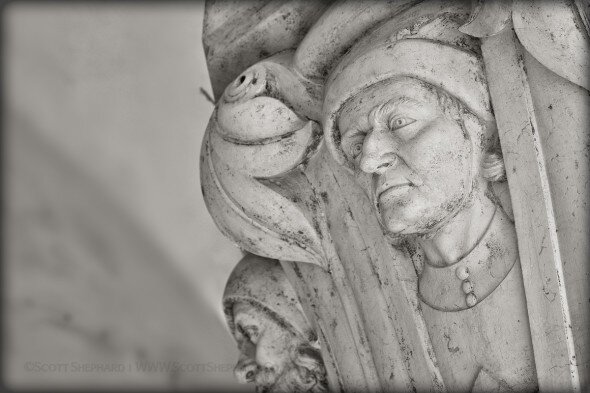 Many of the photos I have posted recently have been resurrected from a fairly large collection of old digital files that have been languishing in a virtual closet. They are a little like old, worn t-shirts that have great sentimental value but should really be turned into rags. My wife even tells me that if I get a new t-shirt, I need to throw an old one away. Imagine that! What if I had to throw one old picture away for every new one I took?Well, that's not in my genes - I blame my parents for being a packrat. And the good thing is that my photos are pretty well organized and that programs like Aperture, iPhoto and Adobe Bridge make it easy to view collections of old pictures.So today's photo was just waiting to see the light of day. It was taken in Venice, Italy, in 2006 and though it looks fairly simple and straight forward, I put about 30 minutes of processing into this to get it the way I wanted it.I'm sure if I had been listening to our tour guide that day, I could tell you more about this man. But I'm afraid I was caught up in my photography. . . .
Many of the photos I have posted recently have been resurrected from a fairly large collection of old digital files that have been languishing in a virtual closet. They are a little like old, worn t-shirts that have great sentimental value but should really be turned into rags. My wife even tells me that if I get a new t-shirt, I need to throw an old one away. Imagine that! What if I had to throw one old picture away for every new one I took?Well, that's not in my genes - I blame my parents for being a packrat. And the good thing is that my photos are pretty well organized and that programs like Aperture, iPhoto and Adobe Bridge make it easy to view collections of old pictures.So today's photo was just waiting to see the light of day. It was taken in Venice, Italy, in 2006 and though it looks fairly simple and straight forward, I put about 30 minutes of processing into this to get it the way I wanted it.I'm sure if I had been listening to our tour guide that day, I could tell you more about this man. But I'm afraid I was caught up in my photography. . . .
02-14-12 Monument
 This is a shot of the front of the Terry Redlin Center in Watertown, South Dakota. And I think it is a good example of the power of the photographer to direct the viewer's attention to details and views that he or she wouldn't or couldn't get independently. Most people see the Redlin center like this.I chose to focus on a very small section of columns just under the triangular pediment. I also chose an oblique angle. Finally, I used a telephoto lens to compress the focal plane, something the human eye can't do.Am I manipulating you? Youbetcha!And, as if you don't already feel used enough, how about my black and white treatment compared to "real" color? I don't know about you, but I like the b&w version better because the photo seems more unified. The colored version tends to allow you look at features in this scene in a way I don't want you to.This is all in a day's work and these are the kind of things true photographers think about. And my goal in life is to keep getting closer to being a "true photographer."
This is a shot of the front of the Terry Redlin Center in Watertown, South Dakota. And I think it is a good example of the power of the photographer to direct the viewer's attention to details and views that he or she wouldn't or couldn't get independently. Most people see the Redlin center like this.I chose to focus on a very small section of columns just under the triangular pediment. I also chose an oblique angle. Finally, I used a telephoto lens to compress the focal plane, something the human eye can't do.Am I manipulating you? Youbetcha!And, as if you don't already feel used enough, how about my black and white treatment compared to "real" color? I don't know about you, but I like the b&w version better because the photo seems more unified. The colored version tends to allow you look at features in this scene in a way I don't want you to.This is all in a day's work and these are the kind of things true photographers think about. And my goal in life is to keep getting closer to being a "true photographer."
Big Beach - Maui
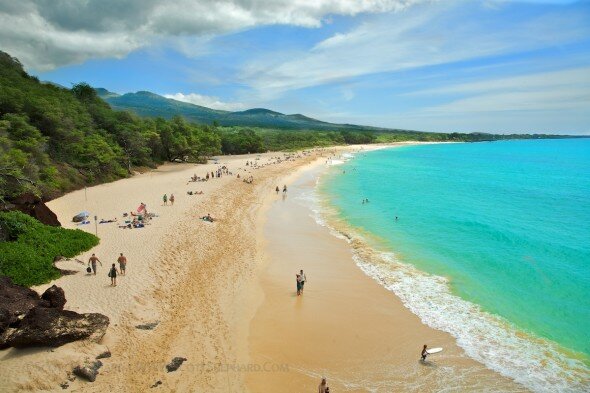 Yes, it is a "big" beach but it really is known as Big Beach, though officially it is Makena Beach State Park. A few years ago, our family visited Maui and we spent a sunny afternoon enjoying the warmth and the waves of Big Beach.Incidentally, in doing a search for "Big Beach" to find the official name, I found about 1000 other photos taken from this vantage point. So much for giving the world a different look at things in this blog. . . . And, incidentally, if I rotated 180 degrees and took another photo, I would be photographing Little Beach, where naked people abound. Officially, nudity is illegal on the public beaches of Maui but apparently the authorities look the other way. Do I have photos of that beach? Nope.
Yes, it is a "big" beach but it really is known as Big Beach, though officially it is Makena Beach State Park. A few years ago, our family visited Maui and we spent a sunny afternoon enjoying the warmth and the waves of Big Beach.Incidentally, in doing a search for "Big Beach" to find the official name, I found about 1000 other photos taken from this vantage point. So much for giving the world a different look at things in this blog. . . . And, incidentally, if I rotated 180 degrees and took another photo, I would be photographing Little Beach, where naked people abound. Officially, nudity is illegal on the public beaches of Maui but apparently the authorities look the other way. Do I have photos of that beach? Nope.
Morning Calm
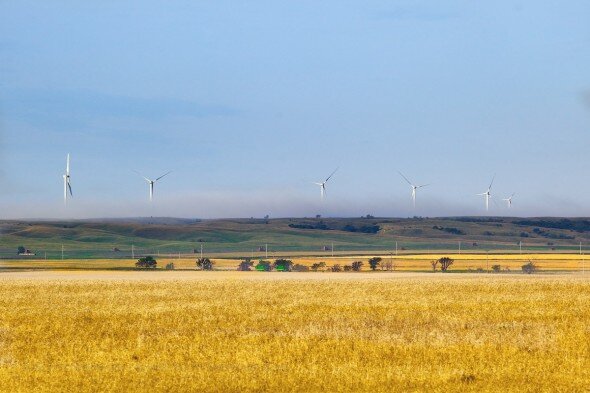 In my quest to find photos to post, I occasionally come across things I have forgotten about. In this case I was heading out to the Missouri River for a sailing trip and I noticed that the wind farm that is near Ree Heights, South Dakota, was partially shrouded in fog. Otherwise, the morning was one of those amazing summer mornings that make South Dakotans forgot about all the winter mornings that aren't so brilliant.I took one photo with my 70-200mm lens, got back and the truck and continued west to my destination.
In my quest to find photos to post, I occasionally come across things I have forgotten about. In this case I was heading out to the Missouri River for a sailing trip and I noticed that the wind farm that is near Ree Heights, South Dakota, was partially shrouded in fog. Otherwise, the morning was one of those amazing summer mornings that make South Dakotans forgot about all the winter mornings that aren't so brilliant.I took one photo with my 70-200mm lens, got back and the truck and continued west to my destination.
Back At Iron Creek (HDR)
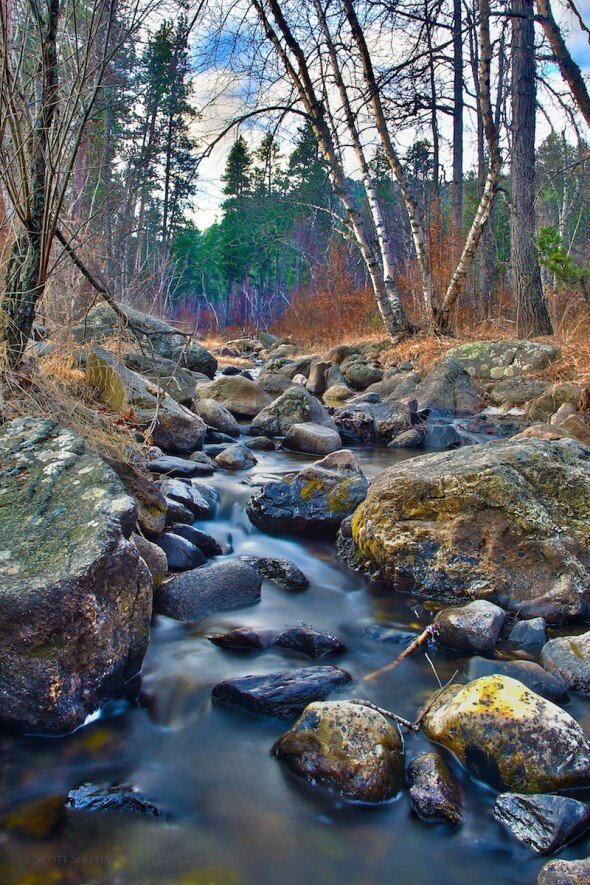 I make a photographic pilgrimage to this place in the Black Hills of South Dakota two or three times a year. I have taken countless pictures here but in 2009, when the photos for today's post were taken, I was experimenting with high dynamic range photography. HDR photos are often two or more photos that are exposed for specific parts of a scene and re then combined.In 2009 the only process I knew for combining two photos into one was a labor intensive task and so I never got around to playing with these pictures. Until yesterday.The process now involves using an automated process in Photoshop CS5 and then importing the composite into Aperture and doing the fine tuning there.Beneath today's post I am revealing the original files. I'm not sure that I should show these files because you might think I am doing something unnatural to the scene to make it look better. But I'm letting you in on a bit of the amazing HDR process. And did Iron Creek really look like the final result in this post? More or less. I say this because HDR processing allows for surrealism and I would say that there is a bit of that here. The result, given the two original files, is certainly intriguing.
I make a photographic pilgrimage to this place in the Black Hills of South Dakota two or three times a year. I have taken countless pictures here but in 2009, when the photos for today's post were taken, I was experimenting with high dynamic range photography. HDR photos are often two or more photos that are exposed for specific parts of a scene and re then combined.In 2009 the only process I knew for combining two photos into one was a labor intensive task and so I never got around to playing with these pictures. Until yesterday.The process now involves using an automated process in Photoshop CS5 and then importing the composite into Aperture and doing the fine tuning there.Beneath today's post I am revealing the original files. I'm not sure that I should show these files because you might think I am doing something unnatural to the scene to make it look better. But I'm letting you in on a bit of the amazing HDR process. And did Iron Creek really look like the final result in this post? More or less. I say this because HDR processing allows for surrealism and I would say that there is a bit of that here. The result, given the two original files, is certainly intriguing.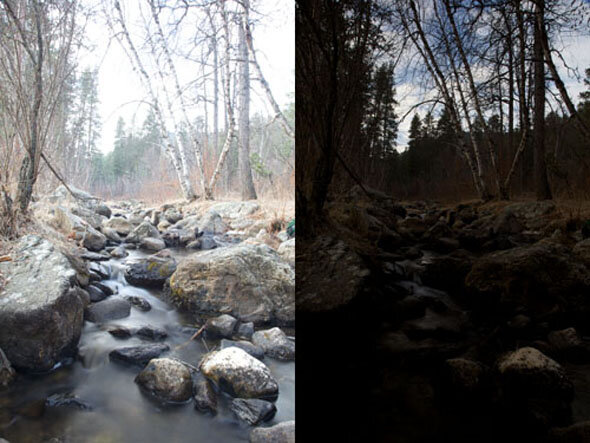
An Abandoned World
 This piece of coral was lying on a beach in Mexico that was covered with pieces of coral. I'm not sure what causes coral to wash up, or even what coral like this looked like when it was thriving in it's undersea world. But I do know that the many small structure make for good macro subjects - especially in low, angular light.
This piece of coral was lying on a beach in Mexico that was covered with pieces of coral. I'm not sure what causes coral to wash up, or even what coral like this looked like when it was thriving in it's undersea world. But I do know that the many small structure make for good macro subjects - especially in low, angular light.



